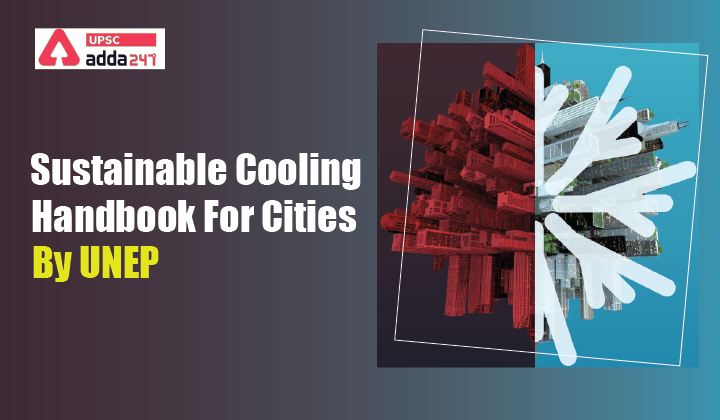Table of Contents
Relevance
- GS 3: Important International institutions, agencies and fora – their structure, mandate.
Have you cleared UPSC CSE Prelims 2021? Register Here for Free Study Material
Context
- Recently, UN Environment Programme (UNEP) has published detailed guidance to help the world’s cities address warming, which is occurring at twice the global average rate in urban areas.
Key points
- Demand for space cooling is increasing. The energy requirement for space cooling is predicted to triple from 2016 to 2050 as millions of households in developing countries acquire air conditioners in the coming decades.
- Impacts of urban heat are not evenly distributed. Cooler cities, homes and streets are key to ensure climate justice. Lower-income districts and communities are usually the most vulnerable to heat, placing the negative impacts of excess warming disproportionately on those least likely to be able to afford or access thermal comfort. We need to transition to more equitable and sustainable ways of cooling our cities and make them liveable for all.
- The benefits of sustainable urban cooling are far reaching, including improved health and productivity, reduced power energy requirements, lower emissions, and economic benefits.
- Cooling strategies can be optimized to work together efficiently. The report calls for a whole-system approach–that is, reduce heat at urban scale, reduce cooling needs in buildings and serve cooling needs in buildings efficiently–to benefit from integrative effects.
Marine Litter and Plastic Pollution Report by UNEP
Example case studies
- United States: Heat reduction services from urban tree cover in the United States are estimated to be worth USD 5.3 billion to USD 12.1 billion annually. Globally, investing USD 100 million annually in street trees would give 77 million people a 1°C reduction in maximum temperatures on hot days.
- Seoul, South Korea: An effort to restore the Cheonggyecheon stream that runs through the city replaced 5.8 kilometres of elevated expressway covering the stream with a mixed-use waterfront corridor. The waterfront corridor decreased temperature 3.3°C to 5.9°C compared to a parallel road a few blocks away.
- Medellín, Colombia: Green corridors were created that follow and restore the geography of the area prior to recent development. From 2016 to 2019, the city created 36 corridors, 18 along major roads and 18 along waterways, covering over 36 hectares. The areas with green corridors have already seen temperature reductions of up to 4°C.
- Paris, France: Paris is home of the first and largest district cooling system in Europe. When the water temperature in the Seine River that cuts through city is below 8°C, this water is used to provide “free cooling.”
- Toronto, Canada: The municipal government implemented the largest lake-source cooling system in the world. Commissioned in 2004, Enwave’s 264 MW of refrigeration Deep Lake Water Cooling (DLWC) system uses Lake Ontario’s cold water as a renewable energy source.
- Guangzhou, China: The municipal government adopted regional centralized cooling as part of a green and environmentally friendly modern urban centre in the core area of the Pearl River New City development. The local environmental temperature in the core area of Zhujiang New Town was reduced by 2-3°C compared to using distributed cooling systems.




 TSPSC Group 1 Question Paper 2024, Downl...
TSPSC Group 1 Question Paper 2024, Downl...
 TSPSC Group 1 Answer key 2024 Out, Downl...
TSPSC Group 1 Answer key 2024 Out, Downl...
 UPSC Prelims 2024 Question Paper, Downlo...
UPSC Prelims 2024 Question Paper, Downlo...





